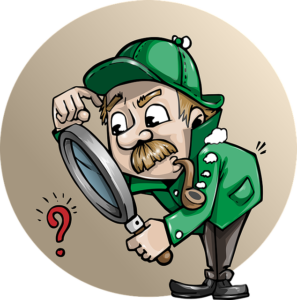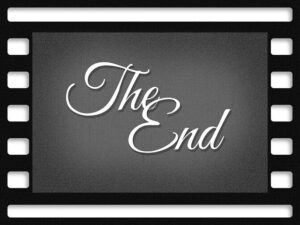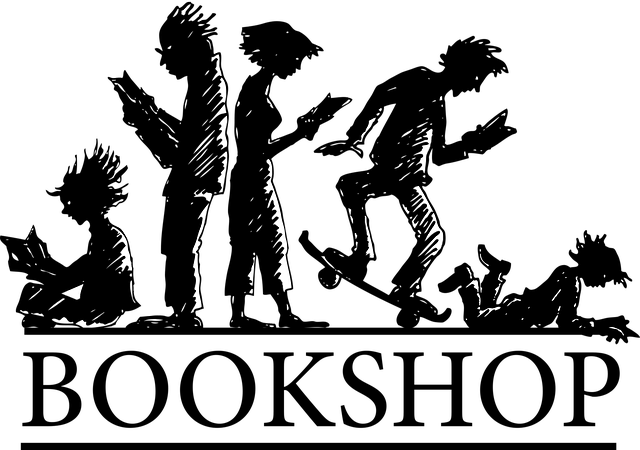The ending of a thriller story is the pivotal point. It can make or break your entire book. So if you have been struggling with how to end your thriller, this blog post is for you!
In this post, we will explore the good, the bad, and the ugly endings. We’ll talk about what a conclusion should be, how to avoid common pitfalls, and give some examples from famous authors so that you don’t feel alone in your struggle with a story’s conclusion.
The good – triumph over adversity
You could end your thriller story by having the protagonist thwarted in their attempt to bring the villain to justice. Perhaps the villain escapes or somehow gets away with his crimes, leaving the protagonist frustrated and defeated.
Alternatively, you could have the protagonist triumph over the villain in a satisfying and thrilling climax. Either way, make sure the ending is satisfying and leaves readers feeling satisfied with the outcome.
The “good” is the most critical part of any story. It’s what readers are looking for; it’s what keeps them turning pages. In a thriller, the good should be thrilling. The main character should overcome obstacles and villains to achieve their goal. You can do this in many ways, but you should always remember to have a satisfying ending in mind.
Here are the four best ways to end your story:
The happy ending
A happy ending in a thriller is the part of the story where everything turns out all right. There is some form of resolution to conflicts or questions raised by the plot in this context.
Suppose a story has an emotional resolution, such as the reunion between the protagonist and a love interest or finding one’s true calling in life after serving time for crimes committed to support a family. In that case, you can achieve resolution through sacrifice and hardship.
In either case, effective story endings – peaceful or violent – all offer a feeling of satisfying conclusion because they demonstrate that good triumphs over evil despite great odds.
The twist ending
Readers of thrillers love twist endings because they love surprises. A twist ending is a literary technique where the reader gets information that turns out to be false. The term “twist” refers to the fact that this surprise is sprung on readers, who might not suspect anything amiss until the last pages of text.
It can also refer to any situation in which someone betrays another person’s trust or betrays themselves during their pursuit of some goal, often one with personal meaning.
In film-making terms, this would mean an ending where something unexpected happens but does not conclude with everything revealed about what happened at the end.
For example, two people die (or were killed), but we don’t know how or why; all clues point towards one character being responsible (but it is not revealed until the sequel), or a character thought to have died turns out to be alive after all.
An excellent example of a twist ending is Gone Girl by Gillian Flynn.
The circular ending

Circular endings are often used in thrillers to create a sense of uncertainty. The reader is left wondering what happened and whether the protagonist will reveal the truth.
Readers feel like they’re on a roller coaster ride, with the circular ending leaving them guessing as to whether there’s more story left – or even if this one has come full circle!
It works because readers want answers, but they also enjoy being kept on their toes by an author who refuses to give everything up right away.
The interpretive ending
The interpretive ending in a thriller allows the reader to interpret the story.
Some thriller stories provide a definitive answer to the question of whodunit, while others leave it up to the reader to decide who was responsible for the crime.
Similarly, some thrillers provide a clear resolution to the story, while others leave the ending open-ended, allowing for multiple interpretations.
The bad – when things go wrong
The bad is when the stakes are highest, and the tension is most intense. Here is when the reader worries most about the protagonist’s fate.
In this sense, the ” bad ” might refer to an unsatisfying ending, abrupt, inconclusive, or not what the audience wanted.
An example would be when everything seems to be wrapped up and resolved within the story only for a final twist to reveal that nothing is as it looks or that a character’s plan has gone wrong.
In a thriller, the bad should be edge-of-your-seat exciting. The villain should be strenuous and relentless, and the obstacles in the protagonist’s way should be insurmountable.
For example, the protagonist is the serial killer stalking and murdering people throughout the story – and now it’s his turn.
The epilogue
The epilogue is the part of a story where you find out what happens to all the main characters. In a thriller, it’s usually not too happy.
The protagonist may be dead or locked up for something he didn’t do. But, on the other hand, the antagonist might have won or gotten away with everything, and everyone will live happily ever after.
But if your book has an open ending, readers will want answers about what happened next, consequences for actions taken, how people felt at different times after events transpired, etc.
Cliffhangers

Many authors write cliffhangers at the end of their novels to leave readers wanting more! Cliffhangers are a story writing technique where the story ends with the protagonist in suspense, often on a cliff or edge. They do this to make audiences want to read on to find what will happen next.
You can use cliffhanger endings for any genre, but they’re most popular in thrillers because people love being kept guessing until the last minute.
It’s also common for authors to leave readers hanging by using only one sentence before cutting off their narrative and going to them pondering what might come next – it builds anticipation and tension!
The ugly – when all seems lost
The ugly is when the protagonist seems to have failed, and the villain has won. It is the darkest part of the story, where there is no hope for resolution or redemption.
The “ugly” might be an ending where violence or tragedy predominates; all the characters are killed or left in a state of misery, the world is a dark and terrible place, etc.
In a thriller, the ugly should be heart-wrenching and emotionally devastating.
An abrupt ending
An abrupt ending in a thriller is when the protagonist’s life is suddenly and violently changed by an event they could not have been prepared for.
You can use this ending to shock the reader and provide an air of mystery and suspense that keeps them reading. Some common examples include:
– A car crashes into the passenger side door of your vehicle while you’re driving down the highway.
– You find out that your partner has been cheating on you with someone else behind your back.
– Your child gets kidnapped right from under your nose.
A combination ending
A combination ending is an ending that combines two or more story arcs into one.
For example, the character might end up dead and then have a post-credit scene with their killer, explaining who killed them.
This type of twist on the traditional “good guy gets away” plotline has been done many times in movies and TV shows, but has found its way into novels as well – most notably Stephen King’s ‘The Stand,’ where all three main characters die at each other’s hands by novel’s end.
How to avoid common pitfalls
Avoiding common pitfalls in writing a story ending is more complex than preventing them when writing the beginning. It’s easy to lose your way and veer off course, so here are some general guidelines for you to follow:
– The ending should feel like an inevitable conclusion from events happening throughout the story.
– Please don’t create any cliffhangers or leave readers hanging without providing sufficient explanation for their continued involvement in the plotline.
– If there are unresolved issues, readers will feel cheated and disappointed by having invested time into reading about characters they no longer care about or following stories they don’t want to see come to closure anymore. This is not what audiences expect, nor do they enjoy.
How do you know you have a good ending?
There’s no single answer to this question, as everyone’s definition of a “good ending” will be different. However, there are a few things to look for that might help you determine whether or not an ending is good:
– Does the ending feel satisfying?
– Are your questions answered and loose ends tied up in a way that makes sense?
– Does the ending leave you feeling optimistic about the future?
– Is the tone of the ending positive or negative?
If you can answer yes to most of these questions, then chances are you’ve just experienced a good ending.
Please remember, when you write your ending, don’t tell it, show it! Don’t tell the reader the hero is happy; show him kissing his lover or opening a bottle of champagne!
Powerful closing lines from literature

“Tomorrow, I’ll think of some way to get him back. After all, tomorrow is another day.”
“Gone With the Wind” by Margaret Mitchell
“So we beat on, boats against the current, borne back ceaselessly into the past.”
“The Great Gatsby” by F. Scott Fitzgerald
“It’s funny. Don’t ever tell anybody anything. If you do, you start missing everybody.”
“The Catcher in the Rye” by J.D. Salinger
“The creatures outside looked from pig to man, and from man to pig, and from pig to man again, but already it was impossible to say which was which.”
“Animal Farm” by George Orwell
Conclusion
Story endings can be difficult to choose from, but they are one of the most important aspects of a thriller story.
The good ending is where the protagonist triumphs over whatever obstacles have been thrown in their way, often against great odds.
The story ending you choose to tell may affect how your audience feels about the protagonist and their journey. Be sure that whatever ending you choose, it is one with which you are comfortable, and that best reflects what happened in your own life or for this character.
If you’re working on your first novel and are looking for more help with your writing, please check out my other articles at https://ullahakanson.com/blog/
Happy writing!
Ulla


James Gasper
Working on first novel, thank you for your examples of great endings
JG
Ulla Hakanson
Hi James Gasper! Glad to hear you liked my examples of great endings! I wish you success with your novel!
🙂 Ulla